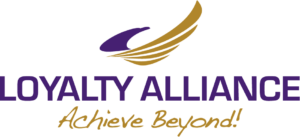Making LinkedIn Work for You
It just doesn’t seem fair. In the movies, some actors get all the girls.
It may seem like some people attract all the best career opportunities in life.
But this is your lucky day. Although I don’t have the formula for attracting your ideal date, I’m highly qualified* to pass along these top five secrets for making LinkedIn work for you to attract ideal-for-you opportunities.
Here we go!
- Write to the margins. What? LinkedIn has character limits for every section. Assuming that you’re writing about yourself, writing with those character limits in mind means that you are likely to use keywords important to your personal brand frequently. Frequent use of your keywords helps the LinkedIn search engine find you and put you at the top of its search results. Conversely, you probably won’t rank well on a keyword search if you’ve written very little text. And while you’re genuinely writing about yourself, you’re likely to sow the seeds of “know, like and trust” in your profile, winning over your ideal audience.
- Write a keyword-rich headline. The headline is the text below your name on your profile. What your headline says is important because it is the first text people will see after your name, it shows up in the homepage feed when you post or comment, and it is the first text to be searched by the LinkedIn algorithm. LinkedIn auto-fills your headline with your current position and company, but they also give you 220 characters to customize it. A customized, keyword-rich headline will help readers know whether or not they are interested in who you are and what you may have to offer. For example, look at these three headlines, the first of which is an “automatic” headline, and the second and third of which have been customized.
-
- Family Attorney at XYZ Law Practice
- Family Law Attorney and Mediator at XYZ Law Practice: Crafting solutions rather than obstacles to help families live their best lives as they transition through a divorce or other family changes.
- Family Law Attorney at [name of firm]: Specializing in complex cases involving high marital assets, the valuation of businesses and professional practices, spousal maintenance, and parenting issues.
You see, space for up to 220 characters provides you with an opportunity to introduce yourself well to others right from the start of your profile.
- Write an About section that really is all about you – and write it in the first person. The maximum character count for this section is 2,600 characters or about five paragraphs – (remember, “write to the margins.”) Use the About section to share your purpose, business passion, and principles – and anything else that would help us get to know you. But note that using this section to tell us about your services instead of about who you are really missing the point. Put service-related information in your experience section. The About section is for wooing your ideal audience. This section will really work for you if you are authentic. The heart-to-heart language will connect with your ideal audience. Those who are not moved are not your ideal audience.
- Use your Experience section to showcase your accomplishments. For each of your listed positions, you have 2,000 characters, about four paragraphs. Instead of detailing your responsibilities in the position, tell us about your accomplishments. People know that when we accomplished great things in the past, we’ll continue to do so. And while you’re telling us how you moved the needle for your company, you’ll be using your keywords, too, which helps you rank well on a LinkedIn keyword search.
- List 50 skills in your Skills section. Skills are keywords – and some skills actually count as multiple keywords, which helps you be found for your ideal opportunities. For example, “cross-functional team leadership” is actually three keywords in one skill. Look over your skills list and pick out your three most important. Reorganize your skills so that those most important skills are in the top three positions. Eliminate skills you no longer care to use and replace them with skills you use now and want to use in your next position. List your people skills and communications skills (a.k.a. “soft skills” though now more appropriately called essential skills).
- Bonus secret: you’ll find helpful resources on my website: https://carolkaemmerer.com. Here you can buy my award-winning book or register for my self-paced, on-demand course on creating a powerful LinkedIn profile, or both. My one-on-one executive profile development may be proper for you if you are a C-suite executive, business owner, or senior leader.
Latest posts by Carol Kaemmerer (see all)
- Five Secrets for Attracting Your Ideal Opportunities - July 29, 2022


Nice share to help other unlock the full potential of LI:)